
Automotive

Aerospace Materials

One and two-component epoxy adhesives characterized by high adhesive strength, flexibility and high heat resistance.
Automotive Components
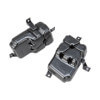
Blow-molded EA pad that offers various advantages, including improved performance, a wide range of profiles, durability and recyclability.
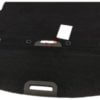
Line of three fabric laminated plastic (FLP) deck boards.
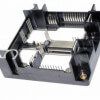
Specialty insert molded parts for inverter, converter and power module applications.
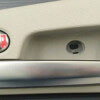
Various parts with features including chrome replica, hydrographic, painting, real touch pattern technology, and IPE, for automotive applications.
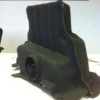
Thermoformed non-woven trunk side, trunk lids, trunk fronts, wheel arch, insulators and others.
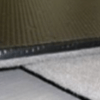
Corrugated polypropylene laminated with carpet, as well as honeycomb polypropylene laminated with carpet, created using blow molded technology.
Epoxy Encapsulations
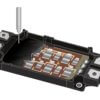
Potting materials available in various grades and formulations customized to your application.

Underfill materials available in various grades and formulations customized to your application.
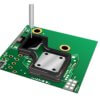
Dam/Fill materials available in various grades and formulations customized to your application.
Indirect Materials
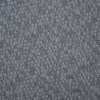
Texiles for automotive seating and door panel applications.
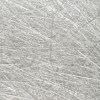
Unwoven fabric consisting of randomly distributed chopped strands held together with a powder or emulsion binder for various automotive applications.
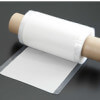
Thermoplastic elastomer thermal conduction sheet for LED, CPU and Power ICs applications.
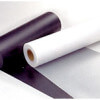
Environmentally friendly flame retardant insulation film made of polycarbonate with non-brominated and non-phophate retardant.
Polyurethane Foam Products and Materials
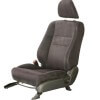
Customizable flame laminates for automobile seat, door, headliner, and other car interior applications.

Raw materials for engineering plastics, including non-halogenated flame retardants, such as phosphazene flame retardants.
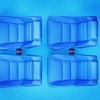
Polyurethane foam pads for automotive seating applications.
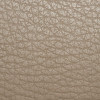
For polyurethane applications.
Thermoplastic Resin
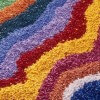
Acrylonitrile Styrene Acrylate (ASA) is a terpolymer composed of the monomers acrylonitrile, styrene and acrylate. It has great toughness and rigidity, good chemical resistance, excellent weather resistance and high gloss. ASA is very similar to ABS, but with better weather resistance. It is used in appliances, building materials, electrical parts, grips, household goods, piping, sporting

Acrylonitrile Butadiene Styrene (ABS) is an engineering terpolymer, a polymer composed of 3 monomers, in this case acrylonitrile, butadiene and styrene. Most ABS is either translucent or opaque, however, transparent grades can be made. ABS can be molded in a wide variety of colors. ABS is naturally very glossy, but low gloss varieties can also

Acrylonitrile Ethylene Styrene (AES) is a terpolymer made of the three monomers acrylonitrile, ethylene and styrene. It has good weather resistance, high heat resistance, high impact resistance, low coefficient of friction, high flow, moderate impact resistance and high rigidity. Also, AES can be flame retardant. Some uses include automotive interior and exterior parts such as

Liquid Crystal Polymer (LCP), an aromatic polyester resin, is known for having an incredibly high heat deflection temperature. Even at extreme temperatures, this material maintains high strength. Radiation and weather exposure have little effect on its mechanical properties. It has a good dialectic strength, arc resistance and dimensional stability. Finally, it is highly flame retardant.

Modified Polyphenylene Ether (M-PPE) is a hybrid resin composed of polyphenylene ether and polystyrene. It is tough, has moderate mechanical properties and good temperature resistance. It has low creep and good dimensional stability. Also, its electrical properties are good and it can be flame retardant. Typical uses are television cabinets, PC parts, electrical motor end

Polyamide, an engineering thermoplastic, is commonly referred to by its trade name nylon. Many varieties of polyamide are produced today, the most common being PA 6 currently. Each different grade can have vastly different properties. For example, PA 6 has a high heat deflection temperature, good strength, good wear resistance, and good chemical resistance. The

This polyester family resin is used in applications that could call for PA, but also require low moisture absorption, better dimensional stability and electrical properties. It has a slightly higher specific gravity than PA, however. Examples of PBT applications are automotive window motors, sensors, fuse boxes, lamp sockets, various electrical connectors, headlight bezels, optical fiber

Polycarbonate is an amorphous engineering thermoplastic that has a high heat resistance, high impact strength, good dimensional stability and can be made transparent. Also, aside from its poor arc resistance, it has exceptional insulating characteristics. PC does tend to be abrasion prone and has limited chemical resistance. However, coatings can be applied to increase the

Polycarbonate/Acrylonitrile Butadiene Styrene (PC/ABS) engineering thermoplastic is a hybrid polymer blend of PC and ABS which results in better balanced heat resistance and impact resistance. PC-ABS is often used when ABS properties are insufficient and PC is not cost effective. Applications include flashlights, phones, laptop cases, keyboards, monitors, automotive IP retainers, wheel covers, tractor hoods

Polyethylene, a polyolefin commodity resin, is the largest volume thermoplastic currently used. The general characteristics are good toughness, excellent chemical resistance, low moisture absorption, low coefficient of friction, lightweight and ease of processing. There are multiple varieties of PE. LDPE (Low Density Polyethylene) is often used in packaging, plastic bags, bottles, wire insulation, medical equipment and

Commonly referred to as polyester, Polyethylene Terephthalate (PET) is a thermoplastic resin in the polyester family. It has good chemical resistance, high impact resistance and is very lightweight. When filled with glass or other fillers, it gains significant durability and strength. PET is commonly used to create plastic beverage bottles and is also very widely

Polyoxymethaline/Acetal (POM) is an engineering thermoplastic valued for its rigidity, wear resistance, dimensional stability, wide range of chemical resistances and lubricity. Its major drawbacks are its high specific gravity and inability to be flame-proofed. While it cant be painted, it can come in many molded in colors. Both homopolymer and copolymer are available, each with

Polyphenylene Sulphide (PPS) is an engineering thermoplastic with very high heat resistance and excellent chemical resistance. Up to 400 degrees F, it has no known solvent. It has a high tensile strength but a very low impact resistance. It has very low moisture absorption and is a very good electric insulator. Many different filled grades

Polyphthalamide (PPA) is a thermoplastic in the PA family. It has high heat resistance, chemical resistance, abrasion resistance, tensile strength and dimensional stability. Unlike typical polyamide, PPA has good creep resistance and moisture resistance. Some examples of applications are fuel lines, LED headlights, metal replacement, catheter tubes, wire casings, gas pipes, toothbrush and hairbrush bristles,

Polypropylene is a polyolefin commodity resin with moderate strength, and good thermal, chemical and electrical properties. Its surface is hard and glossy. PP has good insulating properties as well as excellent arc resistance and dielectric strength. Conductive and anti-static grades can also be made. Both homopolymers and copolymers are available. It can be mixed with

Polystyrene is a commodity resin in the aromatic family and is very widely used. A wide variety of different properties can be achieved with PS by altering the formulation. Unmodified PS is clear, moderately strong and rigid, but brittle. Its heat resistance is low in comparison to other resins, but it has good electrical properties.

Polyvinyl Chloride (PVC) is a commodity resin made by polymerization of vinyl chloride monomers. It very versatile plastic with a high strength to weight ratio, great flame resistance, excellent chemical resistance, low moisture absorption, and high flexural, tensile and mechanical strengths. The cost is competitive with other resins, which makes it a popular candidate for

Thermoplastic Polyolefin (TPO) refers to a blend material composed of polyolefin (PP or PE), rubber and some filler (talc, glass, carbon fiber, etc.). These are members of the TPE (thermoplastic elastomer) family. They generally possess good hardness, flex fatigue and impact resistance. It also has excellent resistance to some chemicals. It has a moderate heat

Thermoplastic Polyurethane (TPU) is a kind of thermoplastic elastomer made using polyurethane. Generally, TPU is elastic, transparent, abrasion resistant and resistant to petroleum based substances. Some uses are caster wheels, power tools, sporting goods, medical devices, footwear, rafts and automotive instrument panels. Nagase offers various grades of TPU. Please contact us for more information.
Thermoset Resin
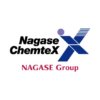
Available in various grades and formulations customized to your application.

One and two component adhesives available in various grades and formulations customized to your application.

Available in various grades and formulations customized to your application.
